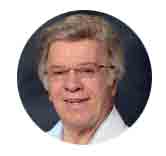
Principles of Human Anatomy, 15th Edition
By Gerard Tortora and Mark Nielsen
Principles of Human Anatomy blends visual and textual elements to illuminate the complexities of human anatomy. Designed for the one-term human anatomy course, this course includes an enhanced illustration program, refined narrative, and the integrated design of dynamic resources like Real Anatomy 2.0 into the curriculum — all available in WileyPLUS. When course materials are presented in an organized way, students are more likely to stay focused, develop mastery, and participate in class. WileyPLUS gives students a clear path through the course material. Principles of Human Anatomy is a rich digital experience, giving students the ability to learn and explore human anatomy both inside and outside of the classroom.
Schedule a Demo Request Instructor AccountWant to learn more about WileyPLUS? Click Here
Replicate a true-to-life cadaver experience with world-class dissection software
Real Anatomy 2.0 is a 3-D imaging software that allows students to dissect through over 40 layers of a real human body to study the anatomical structures of all body systems. Using Real Anatomy, students can interact and practice with a real cadaver as much as they need. Additional dissection videos are also included — in this resource are cat, pig, rat, and human dissection videos. Both the cat and the pig have manuals that are available within the resource for download as PDF.
Flip your classroom or recreate the benefits in-person lecture
Created by author Mark Nielsen, Concept Lectures provide a great resource for professors who want to incorporate more of a flipped classroom into their teaching. These video lectures are dynamic and help students focus on key concepts and make connections to anatomy.

Adaptive Practice:
Every student has a different starting point, and adaptive practice provides endless opportunities for practice to effectively prepare for class or quizzes and exams. Active retrieval of information with practice questions is proven to improve retention of information better than re-reading or reviewing the material, and students who use adaptive practice to prepare for exams do significantly better than those who do not.
What’s New
-
- Prepare students for their future healthcare careers with the most current terminology. Virtually all eponyms have been replaced with current terminology, including updated anatomical terminology and histology terminology.
- Provide students access to accessible materials. The new edition is designed with accessibility in mind regarding font size, color, and other accessibility standards.
- Improve critical thinking and actively engage students at the start. New chapter opening photos, new chapter opening questions to facilitate discussion, and a more visually appealing and pedagogically effective layout that draws students immediately into the content.
Additional Features Include
-
- Adaptive Practice: Adaptive practice offers unlimited drill and practice focused on conceptual material, ensuring students are building their confidence and continuing to engage with the course material.
- Interactive VitalSource eText: Students can easily search content, highlight and take notes, access instructor’s notes and highlights, and read offline on any device.
Instructor Resources
- Instructor’s Manual: Offers helpful teaching ideas, advice on course development, sample assignments, learning objectives, lecture outlines, class exercises, lecture notes, course section reviews, and more.
- Lecture Slides: PowerPoint presentations cover key concepts allowing the instructor to illustrate important topics with images, figures, and problems presented throughout the course.
- Image Gallery: Images implemented in the course are available in JPG and PPT.
- Video Lectures: Video lectures provide explanations of key course concepts.
- TestGen Test Bank: Also editable in Word.

GERARD J. TORTORA is Professor of Biology and former Biology Coordinator at Bergen Community College in Paramus, New Jersey, where he teaches human anatomy and physiology as well as microbiology. He received his Bachelor’s Degree in Biology from Fairleigh Dickinson University and his Master’s Degree in Science Education from Montclair State College. He is a member of many professional organizations including the Human Anatomy and Physiology Society (HAPS), the American Society of Microbiology (ASM), the American Association for the Advancement of Science (AAAS), the National Education Association (NEA), and the Metropolitan Association of College and University Biologists (MACUB).
Above all, Professor Tortora is devoted to his students and their aspirations. In recognition of this commitment, he was the recipient of MACUB’s 1992 President’s Memorial Award. In 1996 he received a National Institute for Staff and Organizational Development (NISOD) excellence award from the University of Texas and was selected to represent Bergen Community College in a campaign to increase awareness of the contributions of community colleges to higher education. Professor Tortora is the author of several best-selling science textbooks and laboratory manuals, a calling that often requires an additional 40 hours per week beyond his teaching responsibilities. Nevertheless, he still makes time for four or five weekly aerobic workouts that include biking and running. He also enjoys attending college basketball and professional hockey games and performances at the Metropolitan Opera House.

MARK NIELSEN is a Professor in the Department of Biology at the University of Utah. For the past 31 years he has taught anatomy, neuroanatomy, embryology, human dissection, comparative anatomy, and an anatomy teaching course to over 25,000 students. He has prepared and participated in hundreds of dissections of both humans and other vertebrate animals. All his courses incorporate a cadaver-based component to the training with an outstanding exposure to cadaver anatomy. He is a member of the American Association of Anatomists (AAA), the Human Anatomy and Physiology Society (HAPS), and the American Association of Clinical Anatomists (AACA).
Professor Nielsen has a passion for teaching anatomy and sharing his knowledge with his students. In addition to the many students to whom he has taught anatomy, he has trained and served as a mentor for over 1,200 students who have worked in his anatomy laboratory as teaching assistants. His concern for students and his teaching excellence have been acknowledged through numerous awards.
1. An Introduction to the Human Body
2. Cells
3. Tissues
4. Development
5. The Integumentary System
6. Bone Tissue
7. The Skeletal System: The Axial Skeleton
8. The Skeletal System: The Appendicular Skeleton
9. Joints
10. Muscular Tissue
11. The Muscular System
12. The Cardiovascular System: Blood
13. The Cardiovascular System: The Heart
14. The Cardiovascular System: Blood Vessels
15. The Lymphatic (Lymphoid) System and Immunity
16. Nervous Tissue
17. The Spinal Cord and the Spinal Nerves
18. The Brain and the Cranial Nerves
19. The Autonomic Nervous System
20. Somatic Senses and Motor Control
21. Special Senses
22. The Endocrine System
23. The Respiratory System
24. The Digestive System
25. The Urinary System
26. The Reproductive Systems
27. Surface Anatomy

